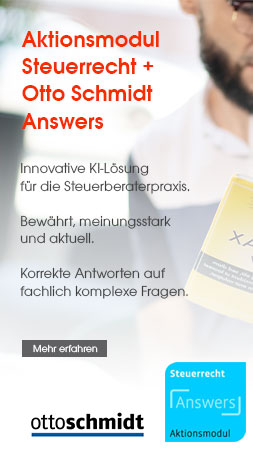Buch, Englisch, 256 Seiten, Paperback, Format (B × H): 156 mm x 234 mm
Buch, Englisch, 256 Seiten, Paperback, Format (B × H): 156 mm x 234 mm
ISBN: 978-1-910151-15-0
Verlag: Spiramus Press
Autoren/Hrsg.
Fachgebiete
- Rechtswissenschaften Ausländisches Recht Common Law (UK, USA, Australien u.a.)
- Rechtswissenschaften Arbeitsrecht Arbeitsvertragsrecht und Personalwesen
- Rechtswissenschaften Arbeitsrecht Antidiskriminierung (AGG), Gleichbehandlung
- Rechtswissenschaften Bürgerliches Recht Sachenrecht Grundstücks- und Immobilienrecht, Immobiliarsachenrecht, Nachbarrecht
- Rechtswissenschaften Wirtschaftsrecht Handels- und Gesellschaftsrecht Handelsrecht, HGB, Handelsvertreter- und -maklerrecht
- Rechtswissenschaften Steuerrecht Einkommensteuer, Lohnsteuer und Kapitalertragsteuer, Kirchensteuer
- Wirtschaftswissenschaften Betriebswirtschaft Betriebswirtschaft: Theorie & Allgemeines
Weitere Infos & Material
Chapter 1: This Chapter looks at the background to employee ownership and why companies choose to become employee-owned. Chapter 2: Employee trusts are a key part of the structure of most employee-owned companies, as outlined in this Chapter. Individual share ownership is also introduced here, as some employee-owned companies combine ownership by an employee trust (which usually holds the majority of the company's shares) with direct, individual ownership of shares by employees. Chapter 3: Delves more deeply into how employee trusts work and how the role of trustees as owners interacts with the role of the company's directors. Chapter 4: In this Chapter, the key steps and decisions that will need to be made in establishing an employee trust are considered. Chapter: This Chapter starts to look in more detail at individual share ownership, in particular the ways in which employees can acquire shares personally, and provides a summary of the tax reliefs that are available for individual employees acquiring shares in their company. Chapter: Employee ownership trusts are a particular kind of employee trust, bringing particular tax reliefs. This Chapter considers these tax reliefs and the various conditions which must be satisfied. Chapter 7: Many companies become employee-owned through the existing owners transferring their shares to an employee trust. This Chapter looks at how to plan ownership succession in this way and some key questions that will need to be considered. Chapter 8: An employee ownership trust deed is likely to form the structural core of most employee-owned companies. This Chapter explains the key provisions that it will commonly include. Chapter 9: This Chapter considers the people issues which arise in a transition to employee ownership, and has been written by Jeremy Gadd. The next five Chapters look in more detail at how employees can acquire shares individually and may be of value to companies wishing to include individual share ownership alongside trust ownership. Chapters 10 and 11 look at two tax-advantaged all-employee share schemes. Chapter 10: The Share Incentive Plan (SIP) enables employees to purchase shares or receive free shares, in each case with relief against income tax. The SIP is an all-employee share scheme, which means that all employees must be allowed to participate in any offer of shares. This Chapter looks at the statutory requirements for operating a SIP and how it works in practice. Chapter 11: Save As You Earn (SAYE) options is another form of all-employee share scheme, under which employees can be granted options to acquire shares in the future and those employees who participate will save a monthly amount towards the option exercise price. This Chapter considers how SAYE options work. Chapters 12 and 13 look at tax-advantaged share schemes which do not need to involve all employees: Chapter 12: This Chapter looks at Enterprise Management Incentive (EMI) options. For companies wishing to create personal share ownership for their key people, EMI options will often be the best place to start. There are particular eligibility requirements for EMI options. These are considered in this Chapter, which also discusses the key elements of an EMI scheme, and offers suggestions as to how EMI options can be structured. Chapter 13: An alternative to EMI options is the Company Share Option Plan (CSOP). This Chapter considers how the CSOP works. Chapter 14: This Chapter looks at other ways in which employees can acquire shares personally. Chapters 15 to 20 consider other legal, regulatory and taxation issues. Chapter 15: Where employees are to acquire shares (or cash) from an employee trust, it is important to ensure that this is structured in a way which does not fall foul of tax anti-avoidance rules which were introduced to counter what is commonly referred to as disguised remuneration. This Chapter looks at these provisions and how to keep on the right side of them. Failure to do so could result in a charge to income tax and National Insurance on the value of assets even though an employee has not acquired any definite ownership rights over them. Chapter 16: This Chapter sweeps up some other legal and regulatory matters not directly covered in previous Chapters. Chapter 17: This Chapter covers data protection requirements. Chapter 18: This Chapter covers phantom shares. Chapter 19: This looks at the interaction between corporation tax, employee trusts and different individual employee share schemes. Chapter 20: There are a number of registration and filing requirements with HM Revenue and Customs and the Registrar of Companies. This Chapter considers these and some continuing administration requirements and summarises the accounting treatment of employee trusts and employee share schemes.






